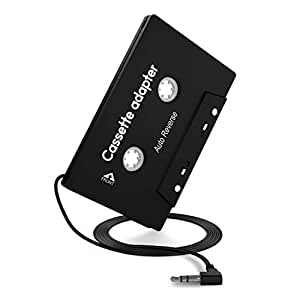By Nate Rogers, The Outline | I consider myself incompetent when it comes to figuring out how most common technology works. I’m not proud of this — I find it somewhat embarrassing to consider how, if I were transported to the Middle Ages, I wouldn’t be able to make a light bulb from scratch and be received as a God. But whether I can personally make a light bulb or not, I still understand it, at least marginally.
But I barely understand the cassette tape adapter, no matter how I try. For those who’ve never had the pleasure, the general premise of a cassette adapter was this: You drive a car that’s old enough to have a tape deck, but because it’s the 21st century, you play your music from your phone or iPod. To bypass the dissonance, you insert a flimsy, empty cassette with an AUX cord coming out of it, and then plug that into your device. At this point, black magic runs through the cord into your tape player, and now “Old Town Road” is playing through your speakers, holy crap.
How does this work? The short breakdown, courtesy of an “AskScience” Reddit thread, is that a traditional cassette holds musical data that’s been magnetically applied onto a ribbon of tape. For a cassette adapter, instead of pressing all the information onto an entire ribbon ahead of time, you apply it, via the digital signal of the headphone jack, onto a small piece of tape looping continuously. Sure, I guess. It’s as simple as its light weight suggests. It’s just the concept that’s heavy.
> > > > > >
Read the whole article here:
https://getpocket.com/explore/item/a-preemptive-eulogy-for-the-cassette-adapter
Nate Rogers is a writer and editor based in Los Angeles.
This article was originally published on June 27, 2019, by The Outline.


